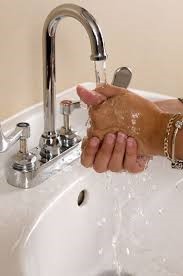 Regular handwashing for at least 20 seconds with soap and running water is one of the best ways to remove germs, avoid getting sick, and prevent the spread of germs to others. Use a hand sanitizer or hand wipe only if soap and water are not available.
Regular handwashing for at least 20 seconds with soap and running water is one of the best ways to remove germs, avoid getting sick, and prevent the spread of germs to others. Use a hand sanitizer or hand wipe only if soap and water are not available.
These are key times to clean your hands:
- Before, during, and after preparing food
- Before eating food
- Before and after caring for someone who is sick
- After using the toilet
- After changing diapers or cleaning up a child who has used the toilet
- After blowing your nose, coughing, or sneezing
- After touching an animal, animal feed, or animal waste
- After handling pet food or pet treats
- After touching garbage
- Clean your hands anytime they are dirty.
Source: http://www.cleaninginstitute.org/clean_living/when_to_wash.aspx
By: Ashley Svaty
 References to pumpkins date back many centuries. The name pumpkin originated from the Greek word for “large melon” which is “pepon.” “Pepon” was nasalized by the French into “pompon.” The English changed “pompon” to “Pumpion.” Shakespeare referred to the “pumpion” in his Merry Wives of Windsor. American colonists changed “pumpion” into “pumpkin.” The “pumpkin” is referred to in The Legend of Sleepy Hollow, Peter, Peter, Pumpkin Eater and Cinderella.
References to pumpkins date back many centuries. The name pumpkin originated from the Greek word for “large melon” which is “pepon.” “Pepon” was nasalized by the French into “pompon.” The English changed “pompon” to “Pumpion.” Shakespeare referred to the “pumpion” in his Merry Wives of Windsor. American colonists changed “pumpion” into “pumpkin.” The “pumpkin” is referred to in The Legend of Sleepy Hollow, Peter, Peter, Pumpkin Eater and Cinderella.
